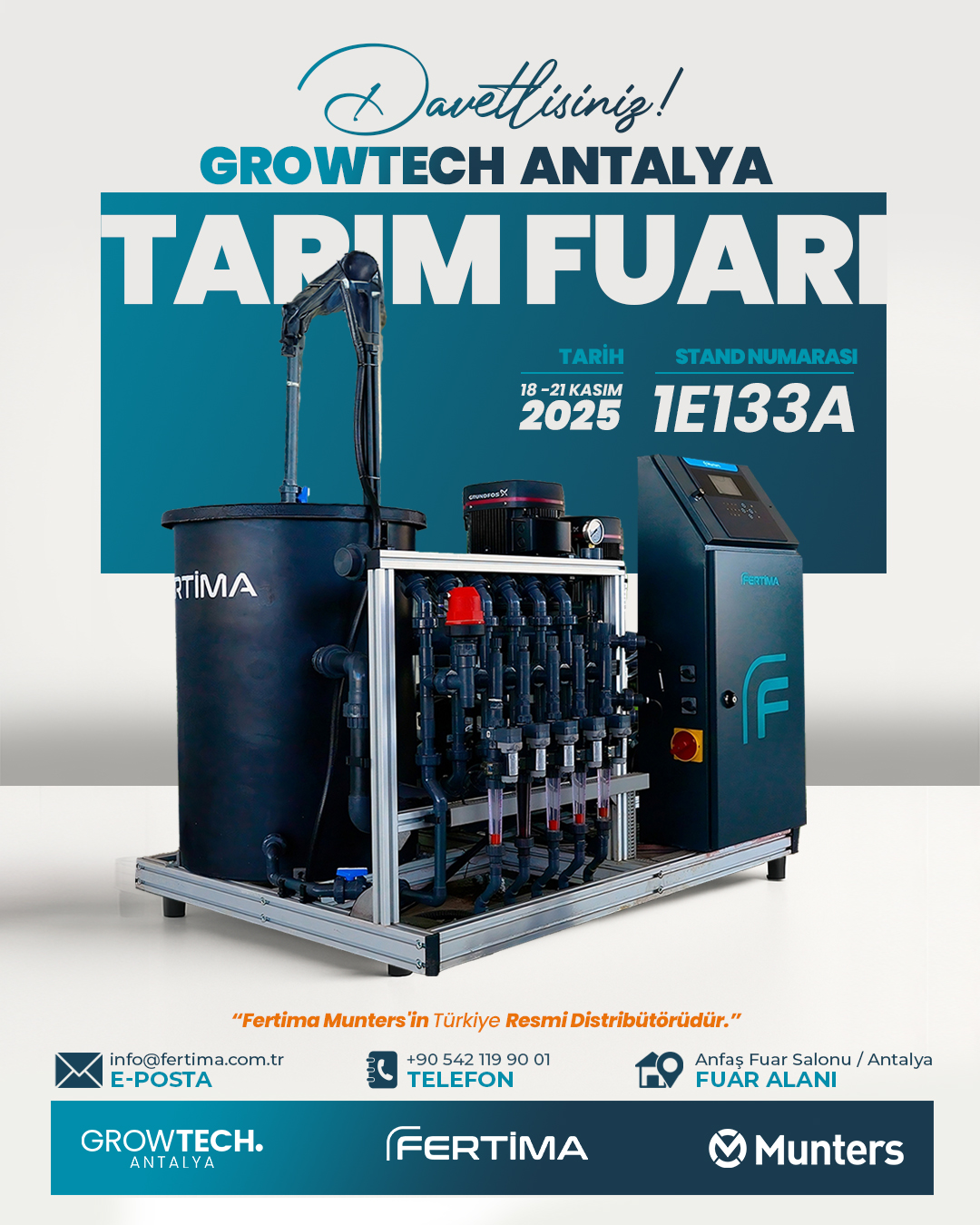Frequently Asked Questions
Fertima manufactures agricultural irrigation and fertilization control units. These units enable farmers to precisely manage their crops’ irrigation and fertilization requirements.
Fertima’s products measure soil moisture, plant nutrient levels, and other key parameters via sensors, enabling farmers to irrigate and fertilize according to crop needs.
Yes. By leveraging sensor technologies to align irrigation with crop demand, Fertima’s products help use water more efficiently.
Fertima’s products can be used in greenhouses, open fields, and nurseries. Different models are available to meet specific requirements.
Fertima’s products increase productivity by ensuring irrigation and fertilization are applied according to crop needs. As a result, plants grow healthier and deliver higher yields.
Fertima’s products are easy to install and operate. Typically, sensors are placed in the soil or on the plants and connected to the control unit, after which the system is ready for use.
Yes. Fertima’s products are environmentally friendly. Precision irrigation and fertilization optimize water and fertilizer use, minimizing environmental impact.
Fertima’s products offer numerous advantages, including water savings, higher productivity, more efficient resource use, and environmentally friendly farming.
Fertima’s products generally require minimal maintenance. Periodic cleaning of sensors and control units and regular inspections are recommended.
Fertima’s products have a wide range of applications and can be used across diverse agricultural regions worldwide. They are particularly beneficial in water-scarce areas.

